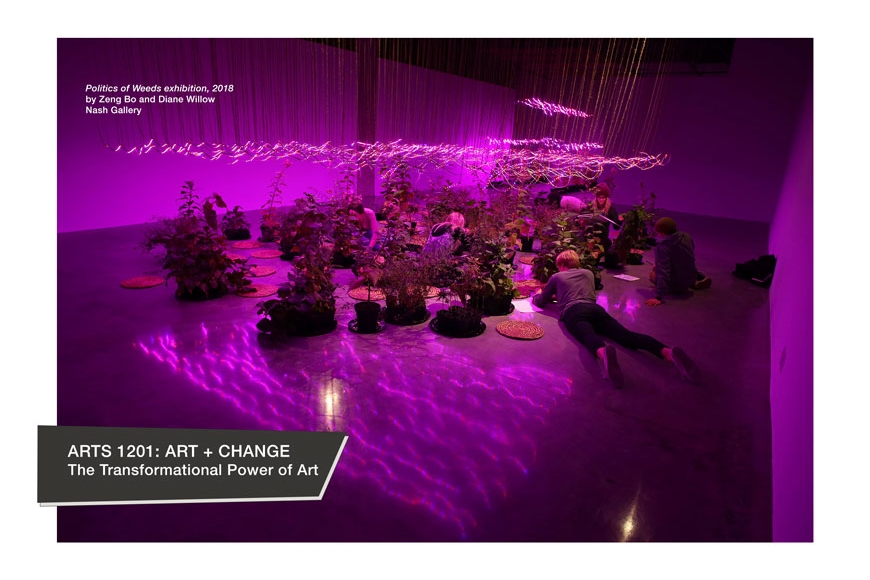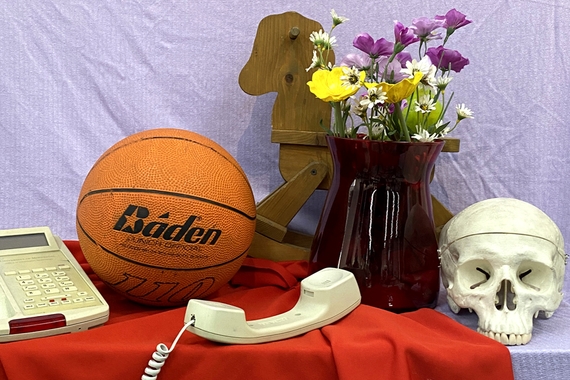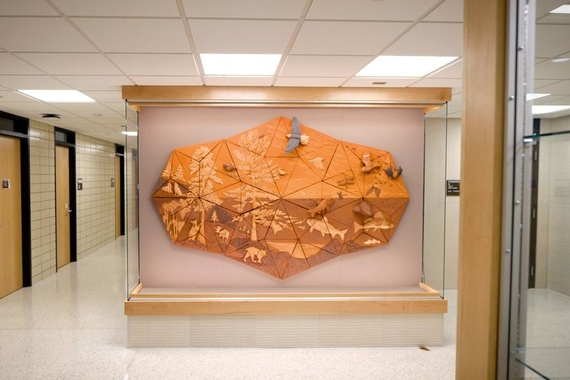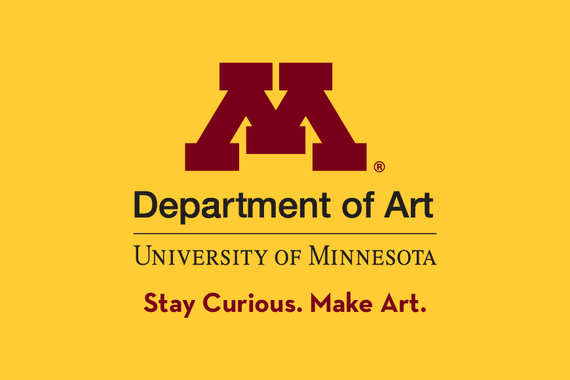Art + Change: The Transformational Power of Art
"Come as you are. You can make art."
This fall the Department of Art launches its first-ever Art + Change course. This new course will introduce students to the Department's Interdisciplinary Art and Social Practice area--an opportunity to investigate the role of the art as a catalyst for social change. Associate Professor Diane Willow brings her depth of experience and technical expertise as the pioneering educator of this new course. Diane encourages students to, "Come as you are. You can make art."
We connected with Diane to learn a little more about this new dynamic course and what students might expect.
Q: Art + Change: The Transformational Power of Art is a new course, what inspired you to develop this class?
A: The course was developed to provide an introduction to the new Interdisciplinary Art + Social Practice area, to help students understand the potential for this area. Art + Change is one of two introductory courses that we are offering for the first time in Fall 2020. (Is Art + MS new? I thought it was offered previously.) We could not have imagined that our focus on Art + Change would converge with our collective experience of global change in response to the physical health pandemic of COVID-19 and the social health pandemic of systemic racism.
Art + Change is designed to create an inclusive and equitable learning experience that benefits from the diversity of each student’s experiences and perspectives - a place that welcomes you to be you, all of you. Art + Change invites you to imagine and begin to create the future that you envision. We will work, individually and collaboratively, to listen to ourselves and one another, to share ideas and discuss differences, to learn and experiment with multiple artistic media, and to create strategies that we can use to transform ideas into action.
Q: What is an example of Interdisciplinary Art + Social Practice? What kind of artistic work is created?
A: Participatory Culture (a.k.a. social practice) focuses on the ways that artists work together to create culture locally, nationally, and globally. Artists are constantly innovating, inventing, and imagining how to make the changes we envision. Participatory culture assumes that we need everyone to create an inclusive and equitable whole. Art is our medium, message, and method.
For instance, Politics of Weeds was an experiential exhibition at the University of Minnesota that involved artists, activists, scientists, and cultural care givers as collaborators. The Nash Gallery was inhabited by living plants that people often consider to be weeds. A suspended circle of living dandelion plants was a central element in the gallery. People could choose to raise and lower the circle to create a space in which they were above, beneath, or on the same level as the dandelions. Within the dandelion circle, collaborating artists and students interested in art, science, and humanities hosted and participated in conversations, teas, meditation, and drawing activities with living plants to consider how and why certain plants are marginalized, perceived as undesirable weeds, and how by extension we marginalize people with these same beliefs and attitudes. Politics of Weeds became a creative catalyst to explore: how we work with plants to transform politics; how we propagate cultures of resistance, resilience, and re-imagination; and how we form and transform our relationships with plants. Collaborating students grew all of the “weeds” from seed in the College of Biological Sciences Conservatory greenhouses, transported them to the Nash Gallery, watered them each day to sustain them, hosted teas, and henna body art sessions, interviewed people about their relationships with plants, and more.
Q: What tools will students use?
A: My philosophy and practice when approaching a new work of art is to create the possibility of realizing each idea by any medium necessary. This has become my mantra, one that guides me as an artist and an educator. The full spectrum of my work could be characterized in many ways: community collaboration, art and technology, art and science, urban ecology, participatory culture, creative city-making, experimental media, multi-sensory, and improvisational.
I have experience working with a vast array of materials and technologies – making paper and code, constructing with wood and electronics, forming clay and creating improvisational performances, using video to shift time and space, photography to propose questions, and sound to listen to and expand our sense of place and one another. I look forward to working together with students to both engage and amplify each person’s skills.
I will introduce a range of tools and techniques that students can use in their living spaces, communities, and cities to create art for change. I will emphasize improvisation as a strategy that enables us to adapt available resources for art.
Q: How do you support students in developing and sharing their artistic voice?
A: Listening to each student, helping them clarify the "what to wonder about." I teach to share the process of learning and to support each student as they clarify their questions, motivations, values, and intentions. I value the lived experience, knowledge, skills, and critical thinking perspectives of each person. As the creative catalyst guiding this collaborative learning experience, my goal is to support each person in their unique process and pace while cultivating a climate of generosity, creativity, empathy, and community among everyone in the course.
Q: What do you hope students will take-away from their class experience?
A: My hope is that students recognize that we are all social beings and that our work as artists contributes to our collective experience of life. We are all participants in and are co-creators of culture. There are many dominant social pressures that teach us to view ourselves as consumers rather than creators of culture. Success would be each person feeling more empowered to recognize, validate, and realize their ideas while systematically generating a diverse, equitable, and inclusive experience of art.



